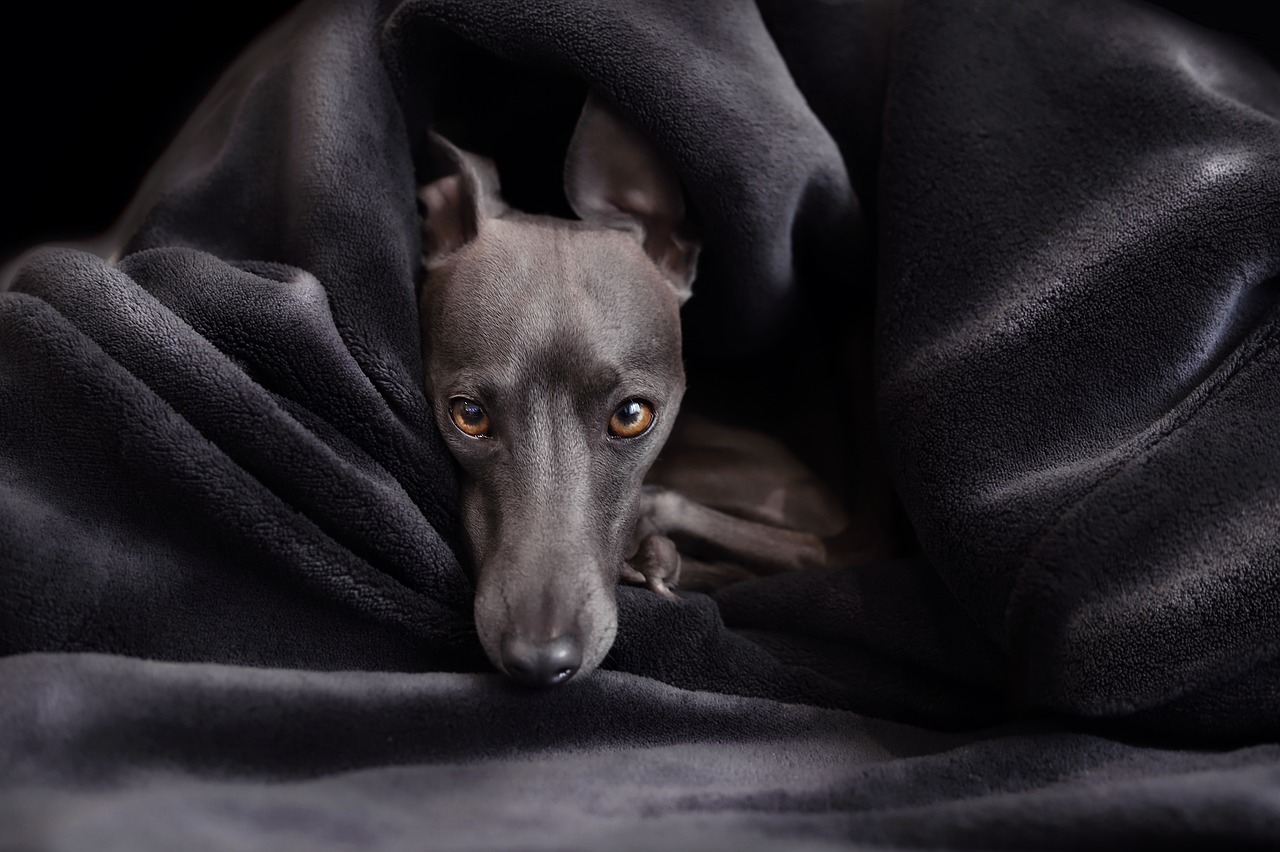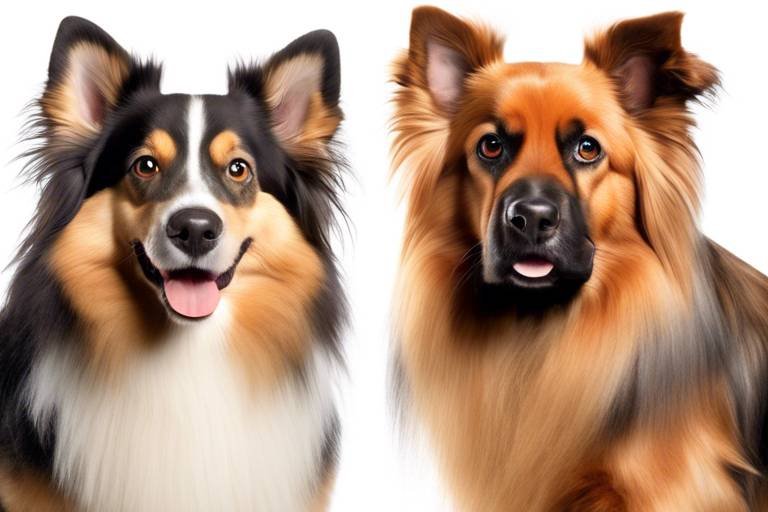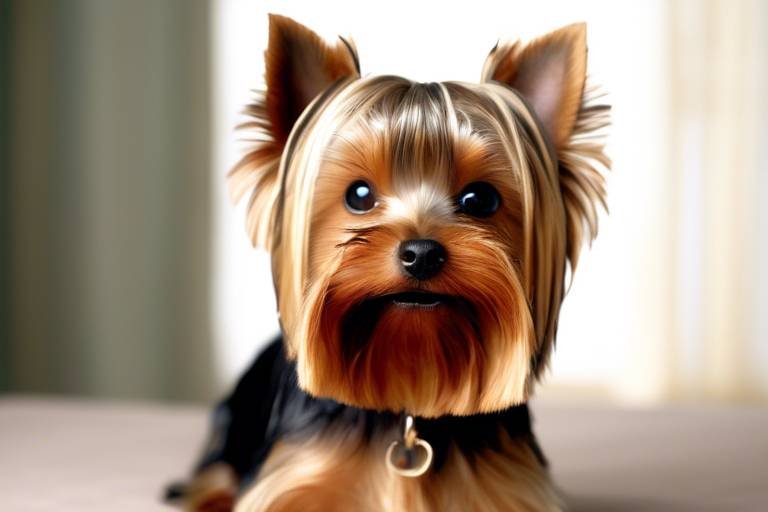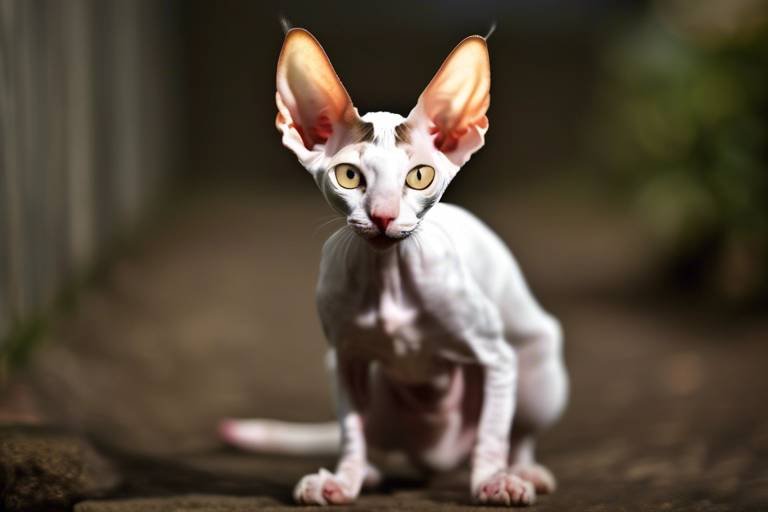Understanding the Unique Needs of Flat-Faced Dog Breeds
Flat-faced dog breeds, often referred to as brachycephalic breeds, have captured the hearts of many dog lovers with their adorable, squished faces and charming personalities. However, owning one of these breeds comes with a unique set of responsibilities and considerations. From their distinctive physical traits to their specific health needs, understanding these nuances is crucial for any prospective or current owner. Imagine having a tiny, furry friend with a face that resembles a plush toy; it’s hard not to fall in love! But, just like any relationship, it requires effort and understanding to ensure a happy, healthy life together.
These breeds, which include popular dogs like French Bulldogs, Pugs, and English Bulldogs, have a unique skull shape that can lead to various health complications. Their short noses may give them that cute, compact look, but they also predispose them to respiratory issues that can affect their quality of life. It's essential to be aware that while their appearance is undeniably endearing, these dogs often struggle with breathing, especially in hot weather or during strenuous activities. As a responsible owner, it’s your duty to recognize these challenges and adapt your care accordingly.
Moreover, flat-faced breeds often experience dental problems due to their crowded teeth, which can lead to discomfort and health issues if not properly managed. Regular dental check-ups and appropriate dental hygiene practices can help mitigate these risks. Just like you wouldn’t ignore a toothache, your furry friend deserves the same level of care! Understanding these health concerns is the first step towards providing a loving and supportive environment for your pet.
When it comes to nutrition, flat-faced breeds require a diet that supports their unique needs. High-quality ingredients are essential in their food to help maintain a healthy weight and prevent obesity, which can exacerbate their breathing issues. Feeding practices should also be tailored to their specific needs, ensuring that meals are appropriate for their size and activity level. Think of their diet as the foundation of a house; without a solid base, everything else can crumble!
In addition to health and nutrition, exercise plays a vital role in the well-being of flat-faced breeds. While they do need regular activity to stay fit and happy, their exercise routines must be carefully monitored. Short bursts of playtime, rather than long, vigorous walks, are often more suitable. This approach not only keeps them active but also reduces the risk of overexertion, which can lead to breathing difficulties.
Grooming and maintenance are also key components of caring for flat-faced breeds. Regular grooming helps manage their unique physical features and keeps their skin healthy. Owners should pay close attention to their wrinkles, ensuring they are clean and dry to prevent infections. Grooming isn’t just a chore; it’s a bonding experience that can strengthen your relationship with your furry friend.
Training and socialization are equally important for these breeds. With their sometimes stubborn personalities, patience is essential. Early socialization helps them develop into well-rounded companions, and positive reinforcement techniques can go a long way in teaching them good behavior. Think of training as a dance; it requires rhythm, patience, and a bit of flair to get it just right!
As you navigate the world of flat-faced breeds, being able to recognize signs of distress is crucial. These dogs can’t always vocalize their discomfort, so being attentive to their body language and behavior is vital. Whether it’s excessive panting, reluctance to play, or unusual lethargy, knowing how to respond can make all the difference in their well-being.
Choosing the right flat-faced breed that fits your lifestyle is another important consideration. Each breed comes with its own set of traits and quirks, so it’s essential to consider your living situation, activity level, and family dynamics before making a decision. After all, bringing a dog into your life is a commitment that should align with your daily routine and environment.
Finally, regular veterinary care cannot be overstated. Routine check-ups and preventive measures are essential to catch any potential health issues early on. Just as you would see a doctor for regular health screenings, your furry friend deserves the same level of attention to ensure a long, healthy life.
In conclusion, understanding the unique needs of flat-faced dog breeds is a journey filled with love, responsibility, and joy. By being aware of their health concerns, nutritional needs, exercise limitations, grooming requirements, and training techniques, you can provide a nurturing environment that allows your beloved pet to thrive. So, embrace the quirks and challenges that come with these adorable companions, and you’ll be rewarded with a bond that is truly special.
- What are the most common health issues in flat-faced dog breeds? Flat-faced breeds often face respiratory problems, dental issues, and obesity due to their unique physical structure.
- How can I ensure my flat-faced dog maintains a healthy weight? Provide a balanced diet with high-quality ingredients and monitor their food intake to prevent obesity.
- What type of exercise is suitable for flat-faced breeds? Short, gentle play sessions are best, avoiding strenuous activities that can lead to breathing difficulties.
- How often should I groom my flat-faced dog? Regular grooming is essential, especially for managing their wrinkles and overall hygiene.
- Is training flat-faced breeds different from other dogs? Yes, it may require more patience and understanding due to their unique temperament.

Health Concerns in Flat-Faced Breeds
Flat-faced dog breeds, also known as brachycephalic breeds, are undeniably adorable with their unique facial structures. However, their charming looks come with a set of health challenges that every potential owner should be aware of. Understanding these issues is crucial for ensuring that your furry friend enjoys a long, healthy life. One of the most significant concerns is respiratory problems. Due to their shortened airways, these dogs can struggle to breathe, especially in hot weather or during strenuous activity. It's like trying to run a marathon while wearing a face mask; it just doesn’t work well!
In addition to respiratory issues, flat-faced breeds are also prone to dental complications. Their unique jaw structure often leads to overcrowding of teeth, which can cause painful dental diseases if not managed properly. Imagine trying to fit a square peg in a round hole—this is what their teeth experience daily. Regular dental care, including brushing and professional cleanings, is essential to prevent these problems.
Another common concern is eye problems. Many brachycephalic breeds have prominent eyes that are prone to injuries and conditions such as corneal ulcers or dry eye. Owners should be vigilant about any signs of discomfort, such as excessive tearing or redness, as these can indicate underlying issues that need veterinary attention.
Moreover, obesity is a significant risk factor for these breeds. Their cute, squishy faces often lead to overindulgence in treats, but maintaining a healthy weight is vital for their overall health. An overweight dog can exacerbate existing health issues and lead to new ones, such as joint problems. It’s crucial to monitor their diet and provide them with high-quality, balanced nutrition.
In summary, while flat-faced breeds bring joy and companionship, they also require special attention to their health needs. Regular veterinary check-ups, a balanced diet, and a watchful eye for any signs of distress can help mitigate these concerns. Remember, being a responsible pet owner means understanding and addressing the unique challenges that come with these lovable breeds.
- What are the most common health issues in flat-faced dog breeds? The most common issues include respiratory problems, dental complications, and eye conditions.
- How can I prevent obesity in my flat-faced dog? Monitor their diet closely, provide regular exercise, and avoid excessive treats.
- What should I do if my dog shows signs of breathing difficulties? Contact your veterinarian immediately for advice and potential treatment options.
- Is regular grooming necessary for flat-faced breeds? Yes, grooming helps maintain their hygiene and can prevent skin issues.

Proper Nutrition for Brachycephalic Dogs
When it comes to feeding our beloved flat-faced companions, understanding their unique nutritional needs is absolutely essential. Brachycephalic breeds, like Bulldogs and Pugs, often have distinct facial structures that can affect their eating habits and overall health. These adorable pups may look cute, but their dietary requirements can be quite different from those of other dog breeds. One of the primary concerns is ensuring that they maintain a healthy weight, as obesity can exacerbate their existing health issues.
High-quality ingredients are the backbone of a nutritious diet for these breeds. It's crucial to choose dog food that lists real meat as the first ingredient, along with a balanced mix of carbohydrates, fats, vitamins, and minerals. Ingredients like sweet potatoes, brown rice, and vegetables can provide the necessary energy without overwhelming their systems. Additionally, protein-rich options can help maintain muscle mass and support their overall vitality.
Moreover, the shape and size of the kibble can make a significant difference in how easily these dogs can eat. Opting for flat or smaller kibble can help them chew better and reduce the risk of choking or gagging. Some brands even offer specially formulated diets designed specifically for brachycephalic breeds, taking their unique jaw structure into account.
Another important aspect to consider is the frequency of feeding. Many owners find success with two to three smaller meals throughout the day instead of one large meal. This approach not only aids digestion but also helps prevent bloating—a condition that can be particularly dangerous for flat-faced dogs. Monitoring their food intake and adjusting portions based on their activity level is vital in keeping them healthy.
In addition to solid food, hydration is key. Always ensure that your furry friend has access to fresh water, especially after meals or playtime. Some owners even find that adding a splash of low-sodium broth to their dog's water can encourage better hydration, making it a fun treat!
Lastly, it's worth noting that treats should be given sparingly. While it's tempting to spoil your dog with goodies, opting for healthy snacks like carrot sticks or apple slices can be a great way to keep their diet balanced. Always check with your veterinarian before introducing new foods, as some items can be harmful to dogs.
To summarize, here are the key points for proper nutrition in brachycephalic dogs:
- Choose high-quality dog food with real meat as the first ingredient.
- Look for kibble that is appropriately sized for their jaw structure.
- Feed smaller, more frequent meals to aid digestion.
- Ensure fresh water is available at all times.
- Limit treats and opt for healthy alternatives.
By keeping these nutritional guidelines in mind, you can help ensure that your flat-faced friend lives a long, healthy, and happy life. Remember, a well-fed dog is a happy dog!
Q: What are the best types of food for brachycephalic breeds?
A: Look for high-quality dog food that lists meat as the first ingredient, and consider brands that offer specially formulated kibble for flat-faced dogs.
Q: How often should I feed my brachycephalic dog?
A: It's generally recommended to feed them two to three smaller meals throughout the day rather than one large meal.
Q: Can I give my flat-faced dog human food?
A: Some human foods are safe for dogs, like carrots and apples, but always check with your vet before introducing new foods.

Exercise Requirements and Limitations
When it comes to exercise, flat-faced dog breeds, or brachycephalic breeds, have unique requirements and limitations that every owner should be aware of. Unlike their longer-nosed counterparts, these adorable pups have a different set of needs due to their distinctive physical structure. Imagine trying to run a marathon while wearing a mask—this is somewhat akin to what these dogs experience when they exert themselves too much. Their short snouts can lead to significant respiratory challenges, making it crucial to tailor their exercise routines accordingly.
One of the first things to consider is the duration and intensity of exercise. While all dogs require regular physical activity to stay healthy, flat-faced breeds need shorter, more frequent sessions. A good rule of thumb is to aim for about 15 to 20 minutes of moderate exercise, such as a leisurely walk or gentle playtime. This can be broken up into two or three shorter sessions throughout the day to prevent overexertion. Always keep an eye on the weather, too; these dogs can struggle in hot and humid conditions, so early morning or late evening walks are often the best times.
It's important to be aware of the signs that your dog may be overdoing it. If you notice any of the following symptoms, it's time to take a break:
- Excessive panting
- Drooling
- Weakness or lethargy
- Difficulty breathing
- Collapsing or stumbling
Incorporating mental stimulation into their daily routine can also be beneficial. Puzzle toys, scent games, and training exercises can help keep their minds sharp without the physical strain of intense exercise. Think of it as giving them a workout for their brains while their bodies take a breather.
Moreover, certain activities are better suited for flat-faced breeds. For instance, swimming can be a fantastic option since it provides low-impact exercise without the stress of weight-bearing activities. Just be sure to supervise them closely, as some brachycephalic breeds may struggle with swimming due to their body structure. Also, interactive play with toys can be a great way to engage them without requiring extensive physical exertion.
In summary, while flat-faced breeds are full of energy and love to play, their exercise routines must be carefully managed to ensure their safety and well-being. By understanding their unique limitations and needs, you can help your furry friend lead a happy, healthy life filled with fun and adventure—without the risk of overexertion.
Q: How often should I exercise my flat-faced dog?
A: Aim for 15 to 20 minutes of moderate exercise, two to three times a day, adjusting based on your dog's endurance and health.
Q: Can flat-faced breeds participate in dog parks?
A: Yes, but be cautious of their energy levels and the weather. Monitor them closely to prevent overheating or exhaustion.
Q: Are there any specific games that are better for flat-faced breeds?
A: Yes! Games that involve mental stimulation, like puzzle toys and scent games, are excellent choices that provide engagement without excessive physical strain.

Grooming and Maintenance Needs
When it comes to flat-faced dog breeds, grooming is not just about keeping them looking cute; it's a vital part of their overall health and well-being. These adorable pups, often referred to as brachycephalic breeds, have unique physical features that require special attention. Their short snouts can cause issues with their skin folds, which can trap moisture and debris, leading to potential infections. Therefore, regular grooming sessions are essential to keep their skin healthy and free from irritations.
One of the primary aspects of grooming flat-faced breeds is managing their facial wrinkles. It's crucial to clean these folds regularly to prevent dirt and bacteria from building up. A simple routine can include using a damp cloth or pet-safe wipes to gently clean the areas around their nose and eyes. This not only helps maintain hygiene but also allows you to bond with your furry friend during the process. Remember, a clean dog is a happy dog!
In addition to facial care, brushing your flat-faced dog’s coat is equally important. Depending on their breed, they may have short, smooth hair or a slightly longer coat that needs regular brushing. For instance, breeds like the French Bulldog have short hair that requires minimal grooming, while a Pekingese may need more frequent brushing to prevent matting. A good rule of thumb is to brush them at least once a week, but more often during shedding seasons. Not only does this help reduce loose hair around your home, but it also promotes a healthy coat and skin.
Bathing is another critical component of grooming, but it should be done with care. Flat-faced breeds can have sensitive skin, so it's important to choose a gentle, hypoallergenic shampoo. Overbathing can strip their skin of natural oils, leading to dryness and irritation. Aim for a bath every month or so, unless they get particularly dirty. After bathing, make sure to dry them thoroughly, especially in the skin folds, to prevent any moisture-related issues.
Moreover, nail trimming is a grooming task that should never be overlooked. Keeping your dog's nails short is essential for their comfort and mobility. Long nails can lead to painful walking and even joint problems over time. If you're unsure about how to trim your dog's nails, consult your veterinarian or a professional groomer for guidance. They can show you the proper technique to avoid cutting too close to the quick, which can cause bleeding and discomfort.
Finally, dental care is a significant part of grooming that often gets neglected. Flat-faced breeds can be prone to dental issues due to their unique jaw structure. Regular teeth brushing, ideally several times a week, can help prevent tartar buildup and gum disease. You can use dog-specific toothpaste and brushes to make this process easier and more enjoyable for your pup. Additionally, consider incorporating dental treats or toys that promote oral health.
In summary, grooming flat-faced dog breeds involves a comprehensive approach that includes:
- Cleaning facial wrinkles
- Regular brushing of the coat
- Careful bathing practices
- Nail trimming
- Dental hygiene
By dedicating time to these grooming needs, you ensure that your beloved flat-faced companion remains not only beautiful but also healthy and happy. Remember, a little effort goes a long way in maintaining their well-being!
Q: How often should I groom my flat-faced dog?
A: Generally, you should groom them at least once a week, but more frequent grooming may be necessary depending on their coat type and shedding.
Q: Can I use human shampoo on my dog?
A: No, human shampoo can be too harsh for a dog's skin. Always use a shampoo specifically designed for dogs.
Q: What should I do if my dog resists grooming?
A: Start slowly and make grooming a positive experience with treats and praise. If necessary, consult a professional groomer for help.
Q: Are there specific grooming tools I should use?
A: Yes, use a soft brush for short-haired breeds and a slicker brush for longer-haired breeds. Additionally, invest in dog nail clippers and a toothbrush designed for dogs.

Training and Socialization Tips
Training flat-faced dog breeds, often referred to as brachycephalic breeds, can be both a rewarding and challenging experience. These adorable little companions, with their squished faces and big personalities, require a unique approach to training that accounts for their specific temperaments and physical traits. First and foremost, patience is key. It's essential to remember that these dogs may not respond to commands as quickly as other breeds, primarily due to their stubborn streak and sometimes short attention spans. So, how can you make training a fun and effective experience?
One effective method is to use positive reinforcement techniques. This means rewarding your dog with treats, praise, or playtime whenever they successfully follow a command or display good behavior. Imagine teaching your dog to sit by showing them a tasty treat. As they sit, you reward them immediately, creating a positive association with the command. Over time, they will learn that sitting equals a tasty reward, making them more likely to repeat the behavior. It's like teaching a child that doing their homework leads to extra playtime—everyone loves a good incentive!
Socialization is another critical aspect of training. Flat-faced breeds can sometimes be prone to anxiety or fear, especially if they haven't been exposed to various environments, people, and other animals. Early socialization helps them become well-adjusted adults. Start by introducing your puppy to different sounds, sights, and smells. Take them to parks, cafes, and even pet-friendly stores. The more experiences they have, the more confident they will become. Think of it like introducing a child to new friends and activities—it's all about building their comfort zone!
When training your flat-faced dog, be mindful of their physical limitations. These breeds can struggle with heat and exertion due to their unique respiratory systems. Therefore, it’s crucial to keep training sessions short and sweet—about 5 to 10 minutes at a time—and always monitor their breathing. If you notice any signs of distress, such as excessive panting or lethargy, take a break and allow them to cool down. This is not just a training tip; it’s a vital part of caring for your furry friend.
In addition to basic commands, consider teaching your flat-faced breed some fun tricks. Simple commands like “shake” or “roll over” can be a great way to bond with your dog while also providing mental stimulation. Dogs love to learn new things, and these tricks can be a fun way to impress your friends and family. Just remember to keep the atmosphere light and enjoyable—training should be a game, not a chore!
Finally, consider enrolling your dog in a training class specifically designed for brachycephalic breeds. These classes can provide expert guidance and help you connect with other owners facing similar challenges. Plus, it’s a great way for your dog to socialize with others in a controlled environment. Think of it as a playdate, but with a bit of learning mixed in!
In summary, training and socialization for flat-faced breeds require a blend of patience, understanding, and creativity. By using positive reinforcement, exposing them to various experiences, and being mindful of their physical needs, you can help your furry friend thrive and become a well-behaved companion. Remember, every dog is unique, so adapt your training methods to suit their personality. With love and dedication, your flat-faced breed will not only learn commands but also become a happy and confident member of your family.
- What is the best age to start training my flat-faced dog?
It's best to start training as early as possible, ideally when they are puppies, around 8 weeks old. Early socialization is crucial for their development. - How long should training sessions be?
Keep training sessions short, around 5 to 10 minutes, to prevent fatigue and keep your dog engaged. - Can I train my flat-faced dog at home?
Absolutely! Home training can be very effective. Just ensure to create a distraction-free environment and use positive reinforcement. - Are there specific commands I should focus on?
Basic commands like sit, stay, and come are essential. Additionally, consider teaching fun tricks to keep the training enjoyable.

Identifying Signs of Distress
When it comes to flat-faced dog breeds, or brachycephalic breeds, understanding their unique body structure is crucial for recognizing when they are in distress. These adorable pups, with their squished faces and big personalities, can often hide their discomfort well. But as a responsible owner, it's essential to be vigilant and attentive. After all, they can't exactly tell us when something's wrong, can they?
One of the most common signs of distress in flat-faced breeds is labored breathing. Given their anatomical structure, these dogs can be prone to respiratory issues. If you notice your furry friend panting excessively, struggling to breathe, or making unusual noises while breathing, it might be time to consult your veterinarian. It's like trying to run a marathon with a heavy weight on your chest; they simply can’t handle it as well as other breeds.
Another key indicator of distress is a change in behavior. Flat-faced dogs are typically social and affectionate, so if your pup suddenly becomes withdrawn, lethargic, or irritable, something could be amiss. Just like humans, dogs can experience emotional distress too. This can manifest in various ways, such as excessive barking, whining, or even destructive behavior. It's important to note these changes and assess any potential triggers, be it environmental stressors or health issues.
Additionally, pay attention to their eating and drinking habits. A flat-faced dog that suddenly refuses food or water may be experiencing discomfort or pain. Just like you might skip a meal when feeling under the weather, your dog may do the same. If this behavior persists for more than a day, it’s advisable to seek veterinary advice. Moreover, keep an eye on their bathroom habits. If you notice any changes, such as diarrhea or straining to urinate, these could be signs of distress that warrant immediate attention.
Lastly, physical signs such as drooling, pawing at the face, or excessive scratching can indicate discomfort. Flat-faced breeds often have skin folds that can trap moisture and dirt, leading to infections or irritations. Regular checks and cleaning can help prevent these issues, but if you notice any signs of distress related to their skin, don’t hesitate to reach out to your vet.
In summary, being proactive is key when it comes to the well-being of your flat-faced dog. By recognizing the signs of distress—such as labored breathing, behavioral changes, altered eating habits, and physical symptoms—you can ensure your furry friend remains healthy and happy. Regular check-ups with your veterinarian, combined with your keen observation, will go a long way in maintaining their quality of life.
- What should I do if I notice signs of distress in my flat-faced dog? If you observe any concerning signs, it's best to consult your veterinarian as soon as possible for a thorough examination.
- How can I help my flat-faced dog breathe easier? Keeping them cool, avoiding strenuous activities in hot weather, and ensuring they maintain a healthy weight can help improve their breathing.
- Are certain breeds more prone to distress than others? Yes, breeds like Bulldogs, Pugs, and French Bulldogs are particularly susceptible to respiratory issues due to their brachycephalic nature.

Choosing the Right Breed for Your Lifestyle
When it comes to selecting a flat-faced dog breed, it's essential to consider how these adorable companions will fit into your daily life. Just like picking the right puzzle piece, you want to ensure that your new furry friend complements your lifestyle seamlessly. Flat-faced breeds, such as Bulldogs, Pugs, and French Bulldogs, each come with their own unique traits and needs, making it crucial to assess your living situation, activity level, and family dynamics before making a decision.
First, think about your living environment. Do you live in a cozy apartment or a spacious house? Many flat-faced breeds adapt well to apartment living due to their generally low exercise requirements, but they still need room to move around comfortably. For instance, a Pug might thrive in a smaller space, while a larger breed like the Bulldog may need more room to stretch out. Additionally, consider whether you have access to outdoor spaces where your dog can enjoy fresh air and some light exercise.
Next, evaluate your activity level. While flat-faced breeds don’t require as much vigorous exercise as some other breeds, they still enjoy playtime and short walks. If you’re someone who loves long hikes or runs, you might want to reconsider your choice, as these breeds can struggle with overheating and respiratory issues during intense physical activity. Instead, opt for a breed that enjoys a more relaxed lifestyle, like the French Bulldog, who would be perfectly content with a stroll around the block followed by a cozy nap on the couch.
Family dynamics also play a significant role in choosing the right breed. Flat-faced breeds are typically known for their friendly and affectionate nature, making them great companions for families. However, if you have young children or other pets, certain breeds may suit your household better than others. For example, Pugs are generally good with kids and can handle a bit of roughhousing, while some Bulldogs may prefer a quieter environment. It's important to consider the temperament of the breed and how they will interact with your family members.
Here’s a quick table to help you compare some popular flat-faced breeds based on their living requirements, exercise needs, and family compatibility:
| Breed | Living Requirements | Exercise Needs | Family Compatibility |
|---|---|---|---|
| Pug | Apartments or small homes | Low; enjoys short walks | Great with kids |
| French Bulldog | Apartments or small homes | Low; prefers light play | Good with families |
| Bulldog | Medium to large homes | Low; short walks preferred | Can be good with children |
| Boston Terrier | Apartments or small homes | Moderate; enjoys playful activities | Friendly with kids and pets |
Ultimately, the key to choosing the right flat-faced breed lies in understanding their specific needs and how they align with your lifestyle. It’s not just about finding an adorable face; it’s about ensuring that both you and your new companion can enjoy a happy, fulfilling life together. So take your time, do your research, and remember that the right breed can bring an abundance of joy into your home.
- What are the most common flat-faced dog breeds? Some popular flat-faced breeds include Pugs, French Bulldogs, Bulldogs, and Boston Terriers.
- Do flat-faced breeds require special care? Yes, they often require special attention due to their unique health concerns, particularly related to breathing and temperature regulation.
- How much exercise do flat-faced breeds need? Generally, they need moderate exercise, such as short walks and playtime, but should avoid strenuous activities.
- Are flat-faced breeds good with children? Many flat-faced breeds are known for their friendly nature and can be great companions for families, but it’s important to consider individual temperament.
- What should I feed my flat-faced dog? A high-quality diet that meets their specific nutritional needs is essential. Consult your vet for recommendations based on your dog’s health and lifestyle.

Veterinary Care and Regular Check-ups
When it comes to the health of flat-faced dog breeds, regular veterinary care is not just a recommendation; it's a necessity. These adorable pups, with their squished faces and charming personalities, often face unique health challenges that can escalate quickly if not monitored. Just like we go for routine check-ups to catch potential issues early, your furry friend needs the same level of attention. Think of it as a preventive shield against the unexpected health surprises that can come with their brachycephalic anatomy.
Regular visits to the vet should ideally occur at least once a year, but for flat-faced breeds, biannual check-ups might be a better approach. This allows for more frequent monitoring of their respiratory health, dental hygiene, and overall well-being. During these visits, your veterinarian will conduct a thorough examination, which may include:
- Listening to their heart and lungs to check for any abnormalities.
- Examining their eyes and ears for signs of infection or other issues.
- Assessing their weight and body condition to prevent obesity, which is a common concern.
- Looking for any signs of dental disease, which can be prevalent in flat-faced breeds.
One of the key components of veterinary care is vaccination. Keeping your dog up-to-date on vaccinations is crucial to protect them from various infectious diseases. Additionally, your vet will likely recommend a schedule for preventive medications, including those for parasites like fleas, ticks, and heartworms. Remember, a healthy dog is a happy dog!
Another aspect of veterinary care that is often overlooked is oral health. Brachycephalic breeds are particularly prone to dental issues due to their unique jaw structure. Regular dental check-ups and cleanings can help prevent serious problems down the line. In fact, studies have shown that dogs with good dental hygiene tend to live longer, healthier lives. So, don’t skip those dental check-ups!
In addition to routine care, it’s essential to be vigilant about any changes in your dog's behavior or health. Flat-faced breeds can exhibit signs of distress or discomfort in subtle ways, so being attuned to their needs is vital. If you notice any of the following signs, it’s crucial to consult your veterinarian:
- Increased breathing effort or noisy breathing.
- Changes in appetite or drinking habits.
- Excessive drooling or difficulty eating.
- Unusual lethargy or reluctance to engage in play.
Being proactive about your flat-faced dog's health can make a world of difference. Not only does it enhance their quality of life, but it also strengthens the bond you share. After all, your furry friend relies on you for their well-being. So, make those vet appointments a priority, and your pup will thank you with tail wags and slobbery kisses!
Q: How often should I take my flat-faced dog to the vet?
A: It's recommended to take them for check-ups at least once a year, but biannual visits can be beneficial due to their unique health risks.
Q: What are common health issues in flat-faced breeds?
A: Common issues include respiratory problems, dental diseases, and obesity. Regular vet visits can help detect these early.
Q: How can I maintain my dog's dental health?
A: Regular dental check-ups, at-home brushing, and dental chews can help maintain your dog's oral hygiene.
Q: What should I do if I notice changes in my dog's behavior?
A: Consult your veterinarian immediately if you notice any unusual signs, as early intervention is key to effective treatment.

Community and Support for Owners
Owning a flat-faced dog breed can be both rewarding and challenging. As these adorable companions bring joy into our lives, they also come with unique needs that require a dedicated approach to their care. This is where the power of community comes into play. Connecting with other flat-faced dog owners can provide invaluable support, knowledge, and resources that can make all the difference in ensuring your furry friend leads a happy and healthy life.
Imagine walking into a room full of fellow dog lovers, each sharing their experiences, tips, and tricks. It’s like a treasure trove of information waiting to be discovered! Whether you’re a seasoned owner or a newcomer, being part of a community allows you to learn from others' successes and mistakes. You can exchange stories about your dogs' quirks, share advice on managing their health concerns, and even discuss the latest trends in nutrition and grooming.
Online forums and social media groups dedicated to flat-faced breeds are excellent resources for finding support. These platforms not only allow you to ask questions but also to connect with experts and veterinarians who specialize in brachycephalic breeds. This community can be a lifeline when you're facing challenges that seem daunting. For instance, if your dog is having trouble breathing or struggling with weight management, you can seek guidance from those who have navigated similar situations.
Moreover, local meetups and breed-specific clubs can foster a sense of belonging. Participating in events such as dog shows, training sessions, or casual playdates can enhance your bond with your dog while also allowing you to socialize with other owners. These gatherings can be a fun way to learn more about your breed and share best practices for care and training.
In addition to sharing experiences, communities often provide access to resources like:
- Veterinary recommendations
- Grooming services tailored for flat-faced breeds
- Training classes focused on their unique needs
- Health and wellness workshops
Ultimately, the community around flat-faced breeds is not just about sharing information; it's about building relationships. These connections can lead to lifelong friendships, creating a network of support that extends beyond just dog care. Whether you’re celebrating milestones or seeking comfort during tough times, knowing that there are others who understand your journey can be incredibly reassuring.
So, if you haven’t already, dive into the world of flat-faced dog breed communities. Join online groups, attend local events, and don’t hesitate to reach out to fellow owners. After all, we're all in this together, navigating the joys and challenges of caring for our beloved brachycephalic companions!
Here are some common questions that flat-faced breed owners often have:
- What are the most common health issues faced by flat-faced breeds? Many flat-faced dogs experience respiratory problems, dental issues, and skin conditions due to their unique anatomy.
- How can I find a local community for flat-faced breed owners? Search for breed-specific clubs, local meetups, or online forums on social media platforms to connect with other owners.
- What should I do if my dog shows signs of distress? Always consult your veterinarian if you notice any unusual behavior or signs of discomfort in your dog.
- How important is socialization for flat-faced breeds? Early socialization is crucial for developing a well-rounded and confident dog. Engaging with other dogs and people helps reduce anxiety and behavioral issues.
Frequently Asked Questions
- What are the common health issues faced by flat-faced dog breeds?
Flat-faced dog breeds, often referred to as brachycephalic breeds, are prone to several health concerns. These include respiratory problems due to their unique skull structure, dental issues because of overcrowded teeth, and skin conditions in their facial folds. It's essential for owners to be aware of these risks to ensure their furry friends live long and healthy lives.
- How can I ensure my flat-faced dog has a proper diet?
Feeding flat-faced breeds requires attention to their specific nutritional needs. It's vital to choose high-quality dog food that is rich in protein and low in fillers. Additionally, be mindful of portion sizes to prevent obesity, which can exacerbate their health issues. Consider consulting with a veterinarian for personalized dietary recommendations.
- What are the exercise limitations for flat-faced dogs?
While exercise is crucial for all dogs, flat-faced breeds have unique limitations due to their respiratory challenges. Short, gentle walks are ideal, and owners should avoid strenuous activities, especially in hot weather. Always monitor your dog for signs of fatigue or distress during exercise.
- How often should I groom my flat-faced dog?
Grooming frequency for flat-faced breeds can vary depending on their coat type, but regular grooming is essential to keep them clean and comfortable. Brushing at least once a week can help reduce shedding and matting. Additionally, pay special attention to cleaning their facial folds to prevent skin infections.
- What training strategies work best for flat-faced breeds?
Training flat-faced breeds requires patience and positive reinforcement. These dogs can be a bit stubborn, so using treats and praise can encourage good behavior. Early socialization is also crucial to help them develop into well-rounded companions. Start training young and keep sessions short and fun!
- How can I identify signs of distress in my flat-faced dog?
Recognizing signs of distress in flat-faced breeds is vital for their well-being. Look for symptoms like excessive panting, lethargy, or unusual vocalizations. If your dog seems uncomfortable or is having trouble breathing, it’s essential to consult a veterinarian immediately.
- What should I consider when choosing a flat-faced breed?
When selecting a flat-faced breed, consider your lifestyle and living situation. Some breeds may require more attention and care than others. Research different breeds to find one that fits your activity level and home environment, ensuring a harmonious relationship between you and your new pet.
- Why are regular veterinary check-ups important for flat-faced dogs?
Regular veterinary visits are crucial for flat-faced breeds due to their predisposition to specific health issues. Routine check-ups can help catch potential problems early, ensuring your dog receives timely care. Preventive measures, such as vaccinations and dental cleanings, are also essential for maintaining their overall health.
- How can I connect with other flat-faced dog owners?
Joining a community of flat-faced dog owners can provide invaluable support and resources. Look for local breed clubs or online forums where you can share experiences, ask questions, and gain insights into breed-specific care. Connecting with others can enhance your knowledge and enrich your pet's life.



















